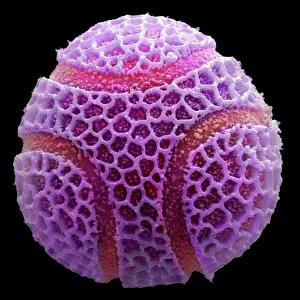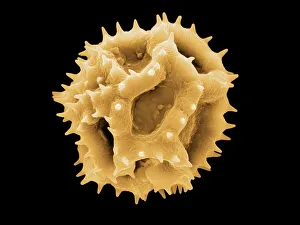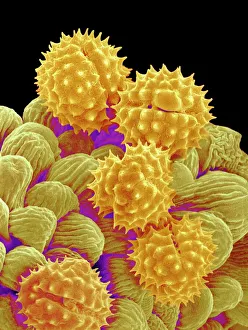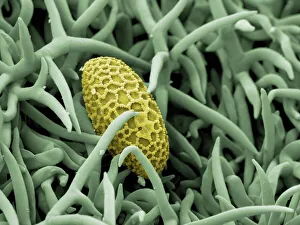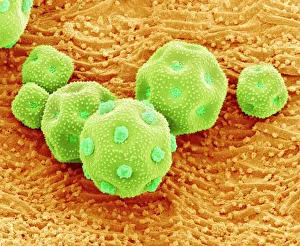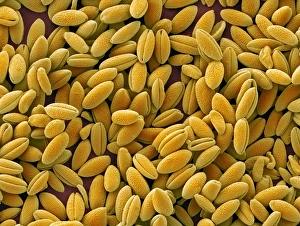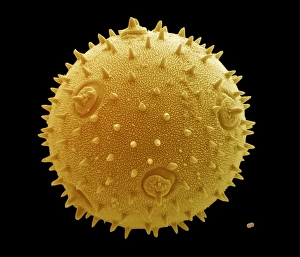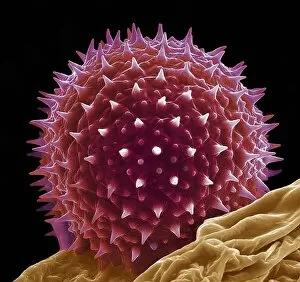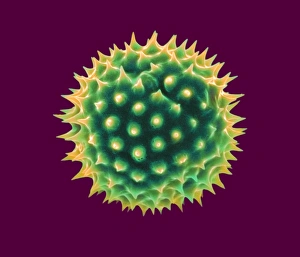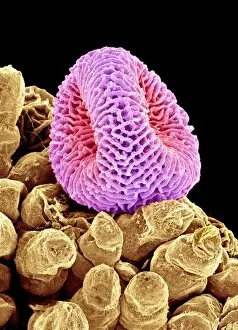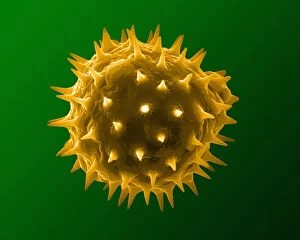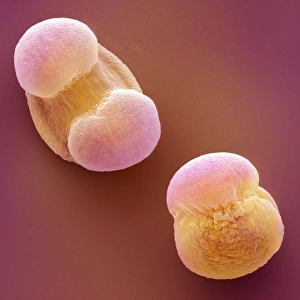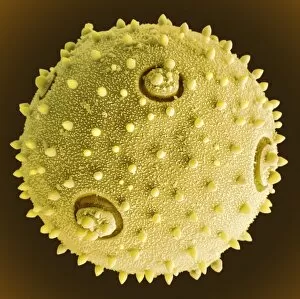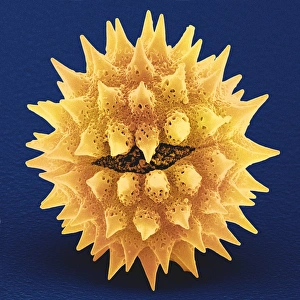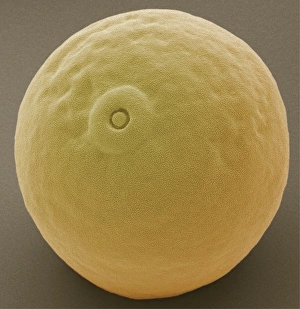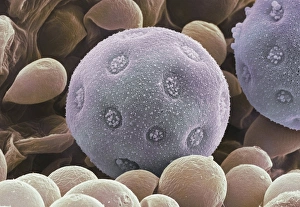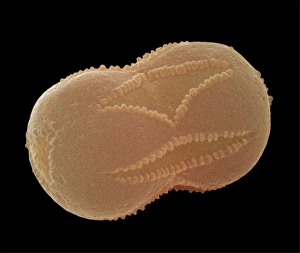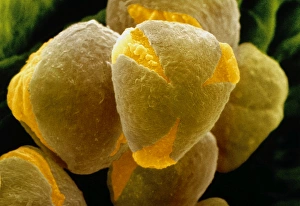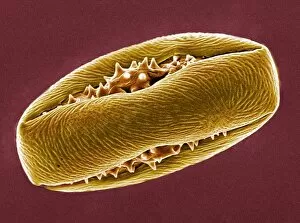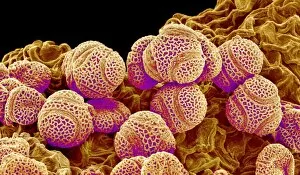Exine Collection
Exine: A Fascinating World Unveiled Through SEM Delicate and intricate, the exine of pollen grains holds secrets waiting to be discovered
All Professionally Made to Order for Quick Shipping
Exine: A Fascinating World Unveiled Through SEM Delicate and intricate, the exine of pollen grains holds secrets waiting to be discovered. SEM (Scanning Electron Microscopy) allows us to explore this captivating microcosm, revealing stunning details that often go unnoticed by the naked eye. Passion flower pollen, under the watchful lens of SEM, showcases its unique beauty. Its exine exhibits a complex pattern resembling an artistic masterpiece, capturing our attention with its mesmerizing intricacy. Dandelion pollen grain reveals a different story altogether. Its exine appears smooth and spherical, hinting at its ability to travel long distances through wind dispersal mechanisms. Philadelphia fleabane pollen grains showcase their distinct shape and texture under SEM's magnification. With their spiky exines resembling tiny medieval maces, these grains are designed for efficient pollination in their natural habitat. A Lily pollen grain delicately rests on a rosemary leaf as we delve into another fascinating world through SEM. The exine displays ornate sculptural features that aid in attracting specific pollinators towards this enchanting bloom. Forsythia pollen grains captivate us with their vibrant yellow coloration when viewed through SEM. Their textured exines seem like miniature landscapes adorned with intricate ridges and valleys – nature's artistry at its finest. Chickweed pollen grains reveal a more simplistic yet elegant design under the scrutiny of SEM. Their smooth and rounded exines suggest adaptation for effective pollination within their environment. Flame lily pollen takes center stage as we zoom in closer using SEM technology. Its striking red hue contrasts against other floral pigments while its meticulously sculpted exine adds an extra layer of allure to this exotic specimen. Hellebore pollen offers a glimpse into an entirely different realm within the microscopic universe captured by SEM imagery. Its finely detailed reticulate structure showcases nature's ingenuity in ensuring successful pollination.

